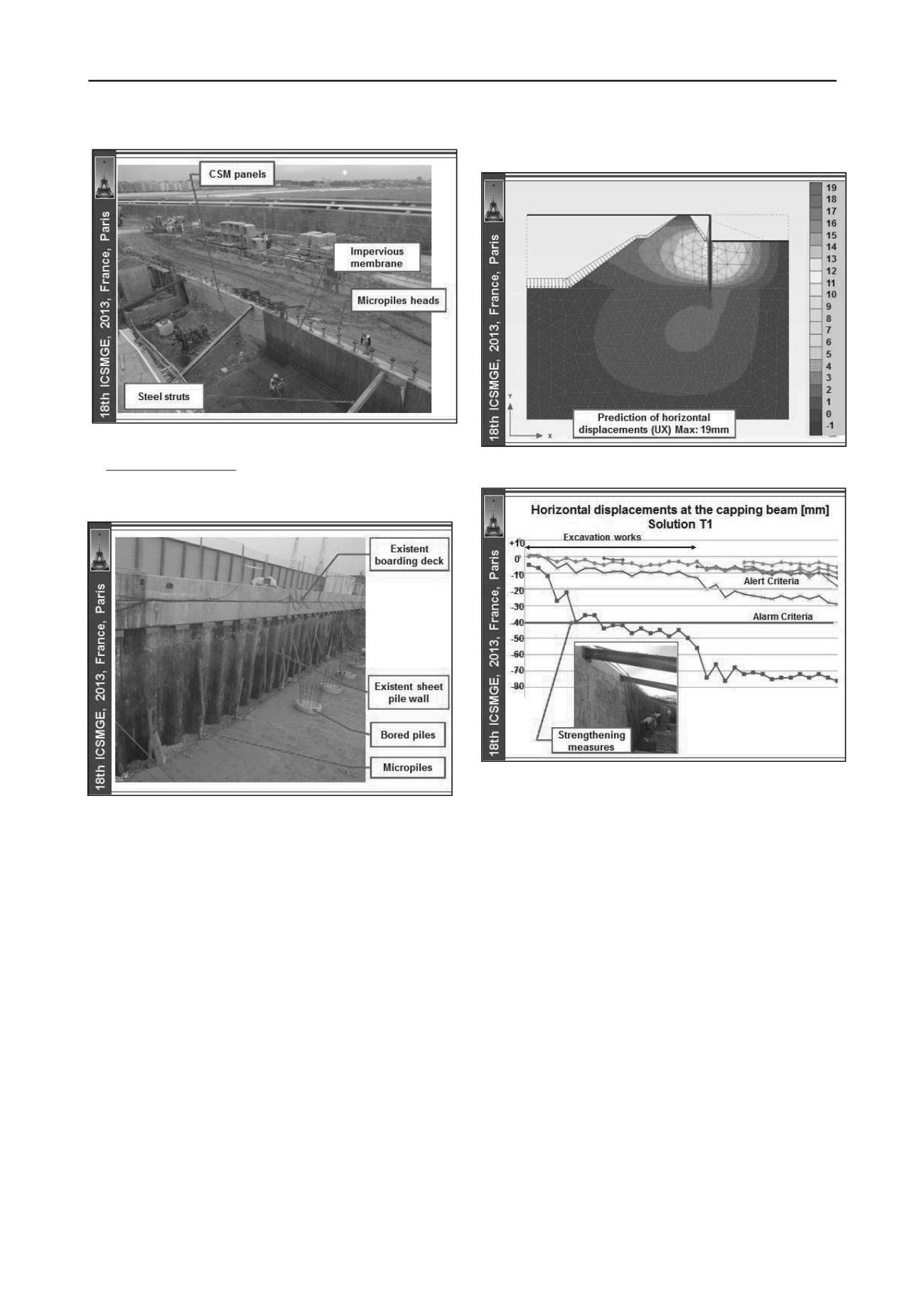
2078
Proceedings of the 18
th
International Conference on Soil Mechanics and Geotechnical Engineering, Paris 2013
Figure 15. Solution T2 – soil - cement panels after excavation.
Solution type 3 (T3): the existent sheet pile wall was
integrated on the global cofferdam, using a bracing system, steel
ties, connected to the head of the boarding deck foundation piles
(Figure 16).
Figure 16. Solution T3 – view of the sheet pile wall after excavation.
3.2 Foundations
For the foundations of the Terminal building reinforced
concrete bored piles (
800mm and
1200mm) and steel
micropiles N80
139,7x12mm were adopted. Micropiles were
used also to resist to both light compression and tension loads,
when the structure self-weight was not enough to equilibrate the
hydrostatic pressures. Micropiles were designed against
corrosion taking into account a sacrificial thickness. All the
piles and micropiles were capped by a reinforced concrete raft,
cast against an impervious membrane.
4 DESIGN
For the design of the adopted solutions, earth retaining
structures and foundations, 2D, including axisymmetric, FEM
analysis was carried out, using Plaxis software (Figure 17).
5 MONITORING AND SURVEY PLAN
A monitoring and survey plan was applied taking into account
the need to perform the construction in safe and economic
conditions, including inclinometers and topographic marks.
Measurements confirmed the excellent overall behavior of the
adopted solution, with the exception of a local area at solution
T1, demanding the implementation of strengthening measures:
inclined steel struts connecting the capping beams to the
foundations piles (Figure 18).
Figure 17. 2D FEM analysis for section T1.
Figure 18. Horizontal displacents at topographic marks - solution T1.
6 MAIN CONCLUSIONS
Taking into account the complex scenario of the presented
work, it is possible to point out the follwing points:
Good water tightness, mainly due to the cofferdam effect
assured by the embedment of the soil - cement panels at
the bed rock, as well as due to the injections cut off
curtain.
Low deformations, confirmed by the monitoring results.
Peripheral r.c. walls with very good finishing faces.
Also very important was the control of both costs and
construction schedule.
7 ACKNOWLEDGEMENTS
The authors are grateful to the owner of the Terminal building,
APDL (Administração do Porto de Leixões), for his permission
to the presentation of this paper. The construction works were
performed by OPWAY and FERREIRAS (general contractors)
and GEORUMO and HAGEN (geotechnical contractors).
8 REFERENCES
Pinto A., Tomásio R., Pita X., Pereira A. and Peixoto A. 2011. Cutter
Soil Mixing Solutions in Portugal on Hard Soils and Weak Rocks.
Proc. 15th European Conference on Soil Mechanics and
Geotechnical Engineering
, September 2011, Athens, Greece, Part 2
– 3.3 – Ground Reinforcement, pp. 1037–1042.


